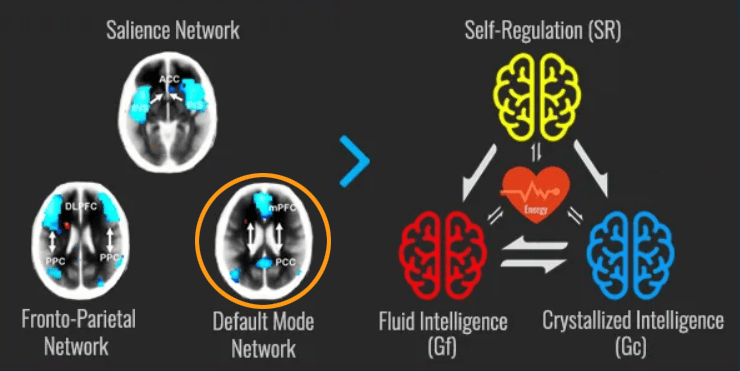.
The theory of fluid and crystallized intelligence was originally proposed by the hall-of-fame psychologist Raymond Cattell back in the 70s. It understands intelligence as the interplay of two ‘yin-yang’ cognitive abilities:
- Fluid intelligence (Gf) – your ability to reason, abstract and make inferences.
- Crystallized intelligence (Gc) – your ability to store and structure knowledge and skills in long-term memory.
Your Gf is invested into the accumulation of your Gc in a two-way relationship that unfolds over time. Your application of fluid intelligence in the past is largely responsible for your present levels of crystallized intelligence.
As Cattell put it:
… this year’s crystallized ability level is a function of last year’s fluid ability level.
With more learning and larger crystallized intelligence stores, the more your fluid intelligence can be improved. Fluid reasoning in turn improves your capacity to learn and your knowledge. Thus we have a positive feedback loop.
General intelligence is the fluid ability to integrate multiple cognitive abilities in the service of solving a novel problem and thereby accumulating crystallized knowledge that, in turn, facilitates further higher-level reasoning.
― WISC-V (Second Edition), 2019
Brain basis of crystallized intelligence
Crystallized intelligence is associated with the Default Mode Network (DMN) and its connections with the hippocampus and long-term memory systems. The DMN is a global connectivity hub network in the brain that can transition to many low-energy demanding, easy-to-reach network states – such as easy to access knowledge, habits or long-term memories when doing daily routines.

The G CODE : crystallized intelligence (Gc)
Basic function
Exploration and the accumulation of easily accessible, self-relevant knowledge, skills, memories and habits that promote adaptation.
Bioenergetics
Information processing with low energy demands, and access to ‘easy-to-reach’ brain states. Higher states of evolution demand higher resting metabolic energy consumption overall, but less energy consumption for a given level of functioning.
Optimal experience
Energy-efficient, effortless, autopilot flow.
Core brain network
Default mode network (DMN).
Core Capacities
- Self-related meaning / sense-making (SM). The matrix of self and other-relevant and meaningful incentives, value and meaning associated with knowledge, skills, memories and experiences. Includes personal narratives.
. - Knowledge, skills & memories (KS). Our crystallized knowledge-base and skill sets with well-consolidated, easy to access, familiar and well-reinforced brain states. It includes both:
- Knowledge, skills and memories, including self-knowledge
- Habits / well-learned routines
.
- Memory consolidation (MC). Consolidation of long-term memories and internal sifting/organisation of experience. Non-voluntary learning and crystallization.
. - Exploration / creativity (EC). Exploration, search, play and creative improvisation for information accumulation and learning.